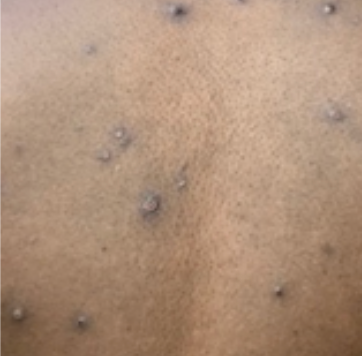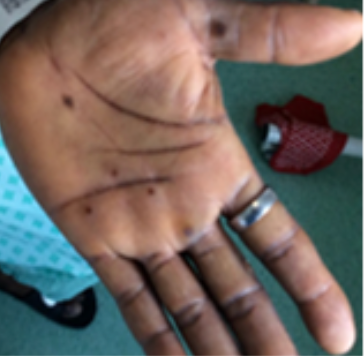‘January 2020 all over again’: Doctors warn Biden’s lack of urgency on Monkeypox is like early delays with Covid
Cumbersome response from US federal government mirrors the beginning of the coronavirus pandemic, experts say
Your support helps us to tell the story
From reproductive rights to climate change to Big Tech, The Independent is on the ground when the story is developing. Whether it's investigating the financials of Elon Musk's pro-Trump PAC or producing our latest documentary, 'The A Word', which shines a light on the American women fighting for reproductive rights, we know how important it is to parse out the facts from the messaging.
At such a critical moment in US history, we need reporters on the ground. Your donation allows us to keep sending journalists to speak to both sides of the story.
The Independent is trusted by Americans across the entire political spectrum. And unlike many other quality news outlets, we choose not to lock Americans out of our reporting and analysis with paywalls. We believe quality journalism should be available to everyone, paid for by those who can afford it.
Your support makes all the difference.Public health officials are sounding the alarm about the Biden administration’s lackluster response to the spiralling monkeypox outbreak.
As the World Health Organisation (WHO) weighs whether to declare the monkeypox an international emergency, experts on the frontlines of efforts to contain the virus in the United States are comparing the federal government’s ponderous response to the beginning of the coronavirus pandemic.
“It felt like January 2020 all over again,” Lauren Sauer, director of the Special Pathogens Research Network, told The Washington Post.
More than 170 cases have been detected in the US, according to figures from the Centers for Disease Control and Prevention, and the window to stop community transmission is closing, experts say.
However that is likely only a portion of the true number of infected patients as the US is lagging behind other countries in expanding access to testing and vaccinations, health experts say.
And the lack of urgency in explaining the danger to the public has left at-risk communities, in particular gay and bisexual men, vulnerable, several public health officials told The Post.
Unlike coronavirus, monkeypox has been studied for years and experts from the WHO and CDC have strategies in place to prevent a major outbreak.

Officials told The Post the CDC has been too slow to identify positive cases, and blame its narrow testing criteria.
Doctors who want to test a patient for the virus must first consult with a state epidemiologist, which can result in delays of several days.
On Wednesday, the Biden administration started shipping monkeypox tests to commercial laboratories, which expands the capacity to about 8,000 tests per week.
“All Americans should be concerned about monkeypox cases,” said Health and Human Services Secretary Xavier Becerra in a statement on Wednesday.

Experts spoken by The Post also cited a lack of familiarity among US doctors with the symptoms, which usually begin with flu-like cough and fever before progressing to a rash on the face and body.
David Harvey, executive director of the National Coalition of STD Directors, said the US had been much slower in distributing photos of what the virus looks like on fair skin, compared to other affected countries.
Last week, WHO Director-General Tedros Adhanom Ghebreyesus described the recent monkeypox epidemic as “unusual and concerning.”
More than 3,300 cases of monkeypox have been detected in 42 countries where the virus hasn’t been typically seen. More than 80 per cent of cases are in Europe. Meanwhile, Africa has already seen more than 1,400 cases this year, including 62 deaths.
Monkeypox has sickened people for decades in central and west Africa, where one version of the disease kills up to 10 per cent of people infected.
The version of the disease seen in Europe and elsewhere usually has a fatality rate of less than 1 per cent and no deaths beyond Africa have so far been reported.
A decision on whether the WHO will declare monkeypox outbreak a global emergency could come as soon as Friday.




Join our commenting forum
Join thought-provoking conversations, follow other Independent readers and see their replies
Comments